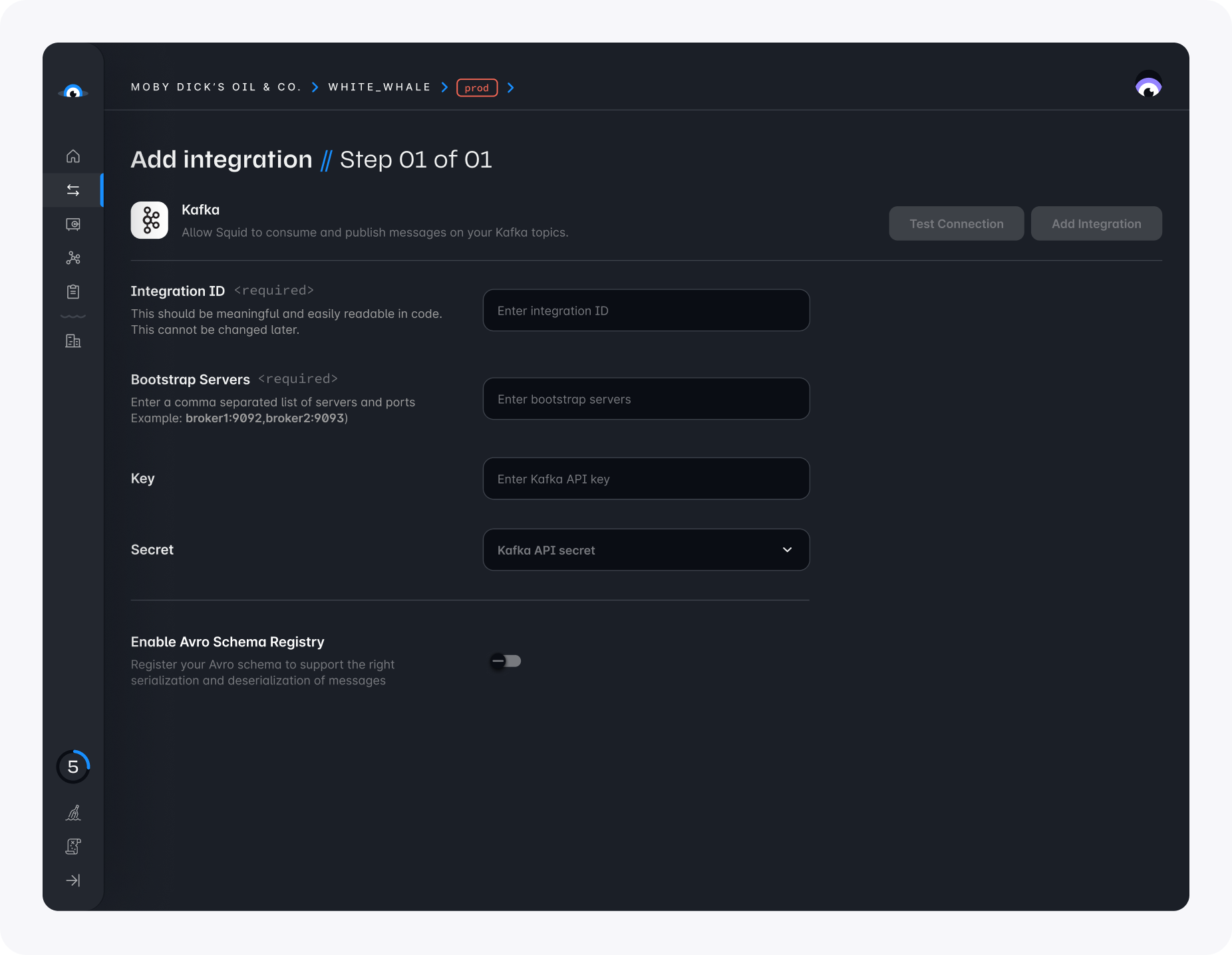Kafka integration
Connect your existing Kafka instance to Squid
Set up a Kafka integration
When using your own Kafka integration rather than the built-in queue, first add the integration to Squid.
In the Squid Console, navigate to the Integrations page and select the Kafka integration.
Provide the following details:
- Integration ID - Choose an ID that is brief and helps identify the integration.
- Bootstrap servers - A comma-separated list of servers and ports.
- Key - Your Kafka API Key.
- Secret - Your Kafka API secret. This is securely stored in Squid Secrets.
- Avro schema registry - In the case that you would like to consume or produce Avro messages, provide the URL of your Avro schema registry. You can find this value in your cluster settings.
Click Test connection to verify the integration information. Once verified, click Add integration.

To access the queue from the client, create a reference to a QueueManager using queue and passing the topic name and integration ID:
const queue = squid.queue('topic-name', 'kafka-integration-id');
To read messages from a queue, use the consume method. This returns an Observable that updates whenever a new message is posted to the queue. Messages are of string type.
const topicMessagesObs = queue.consume();
topicMessagesObs.subscribe((message: string) => {
console.log(message);
});
When you subscribe to a topic, the Observable you receive is configured to only include messages produced after the subscription is established. This behavior is due to the subscription process involving a server call, which introduces an approximate delay of ~100ms. Therefore, you can expect a short wait before the Observable starts delivering new messages.
To prevent memory leaks, complete your Observable when no longer in use:
topicMessagesObs.unsubscribe();
To add messages to a queue, use the produce method. This method takes an array of string messages that are then consumed by clients subscribed to the queue.
queue.produce(['hello', 'world']);
Securing your Apache Kafka topics
Accessing your CApache Kafka topics on the client requires security functions.
To secure a Squid queue topic, use the @secureTopic decorator, passing the topic name and the type of action. The following code allows read and write access to a queue for the 'topic-name' topic:
import { SquidService, secureTopic } from '@squidcloud/backend';
export class ExampleService extends SquidService {
@secureTopic('topic-name', 'all', 'kafka-integration-id')
allowTopicAccess(): boolean {
return true;
}
}
To learn more about security functions, see the Queue security docs.